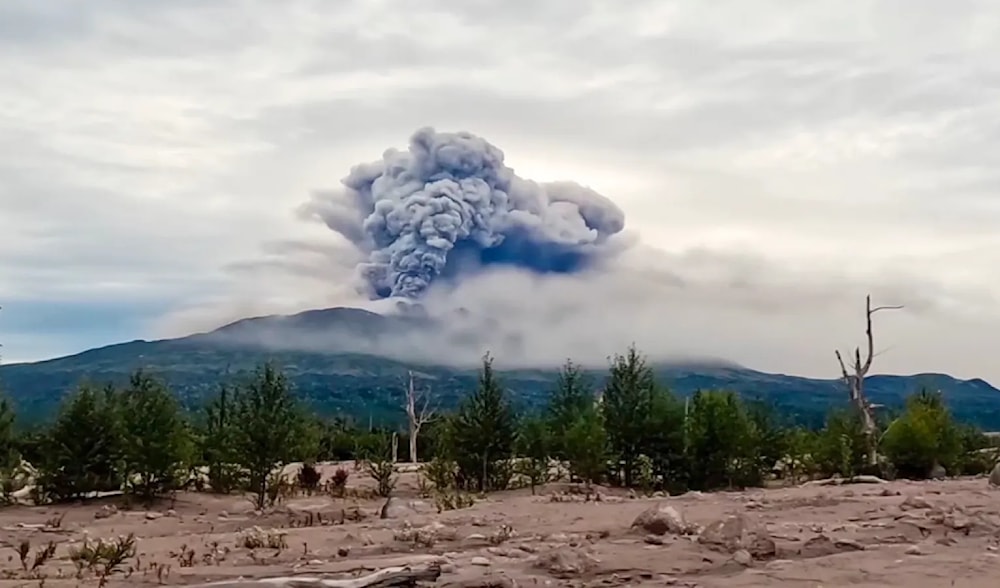Russian volcano erupts after 7.0 earthquake, code red aircraft alert
The earthquake caused "severe shaking" to buildings and prompted a tsunami warning that was later lifted.
-

Eruption of the Shiveluch volcano in Kamchatka Peninsula, about 500 km from Petropavlovsk-Kamchatsky, Russia on August 18, 2024. (AP)
Russia's Shiveluch volcano erupted following a 7.0 earthquake off the east coast of the Kamchatka peninsula.
Footage of the volcanic eruption showed plumes of ash extending 1,500 km to the east-south-east, triggering a red aircraft warning.
The earthquake, which the US Geological Survey (USGS) described as "the result of reverse faulting," resulted in "severe shaking" to buildings in the city of Petropavlovsk-Kamchatsky near a major naval base.
There were no early reports of damage or injuries and the tsunami warning that was issued following the 7.10 am seismic wave was later lifted.
Potential speculated threats
After the initial earthquake, Russian scientists warned that a second potentially stringer quake with a 9.0 magnitude may occur "within 24 hours," while Tokyo's Volcanic Ash Advisory Center (VAAC) alerted of the continuing “explosive activity."
The US National Weather Service's Pacific Tsunami Warning Center in Honolulu initially warned of potentially dangerous tsunami waves for coasts within 480 kilometers of the earthquake's epicenter, but later declared the threat had ended.
“At the location of this earthquake, the Pacific place is moving west-northwest with respect to the North America and Eurasia plates," according to a statement by the USGS, adding, “Some authors divide this region into several microplates that together define the relative motions between the larger Pacific, North America, and Eurasia plates; in this depiction, the Kamchatka Peninsula is located on the Okhotsk microplate, which is part of the North America plate.”
The Russian volcano is prone to catastrophic eruptions, which is evident through its 1854 and 1964 incidents when a large section of the lava dome collapsed, resulting in a debris avalanche.

 2 Min Read
2 Min Read








